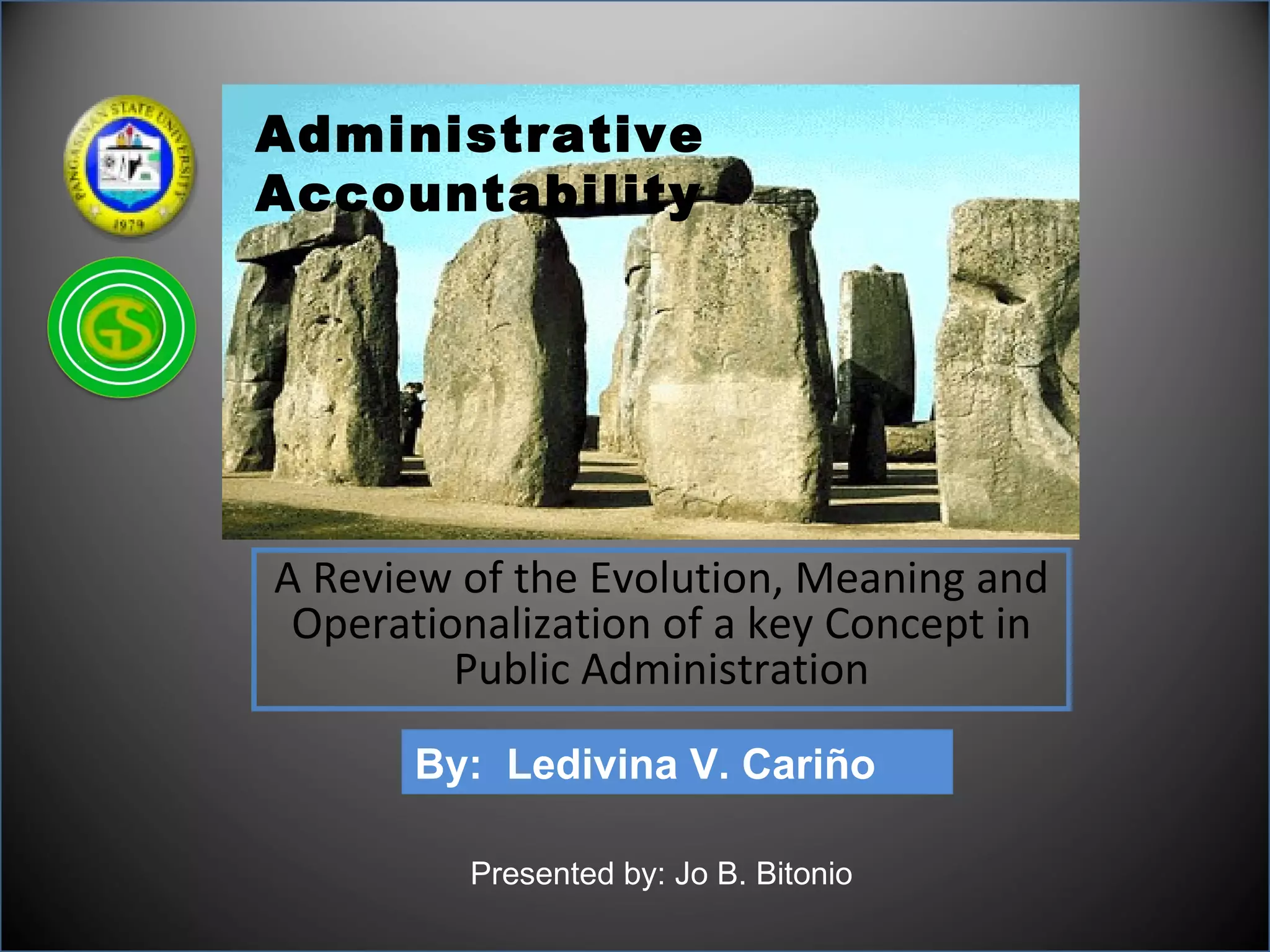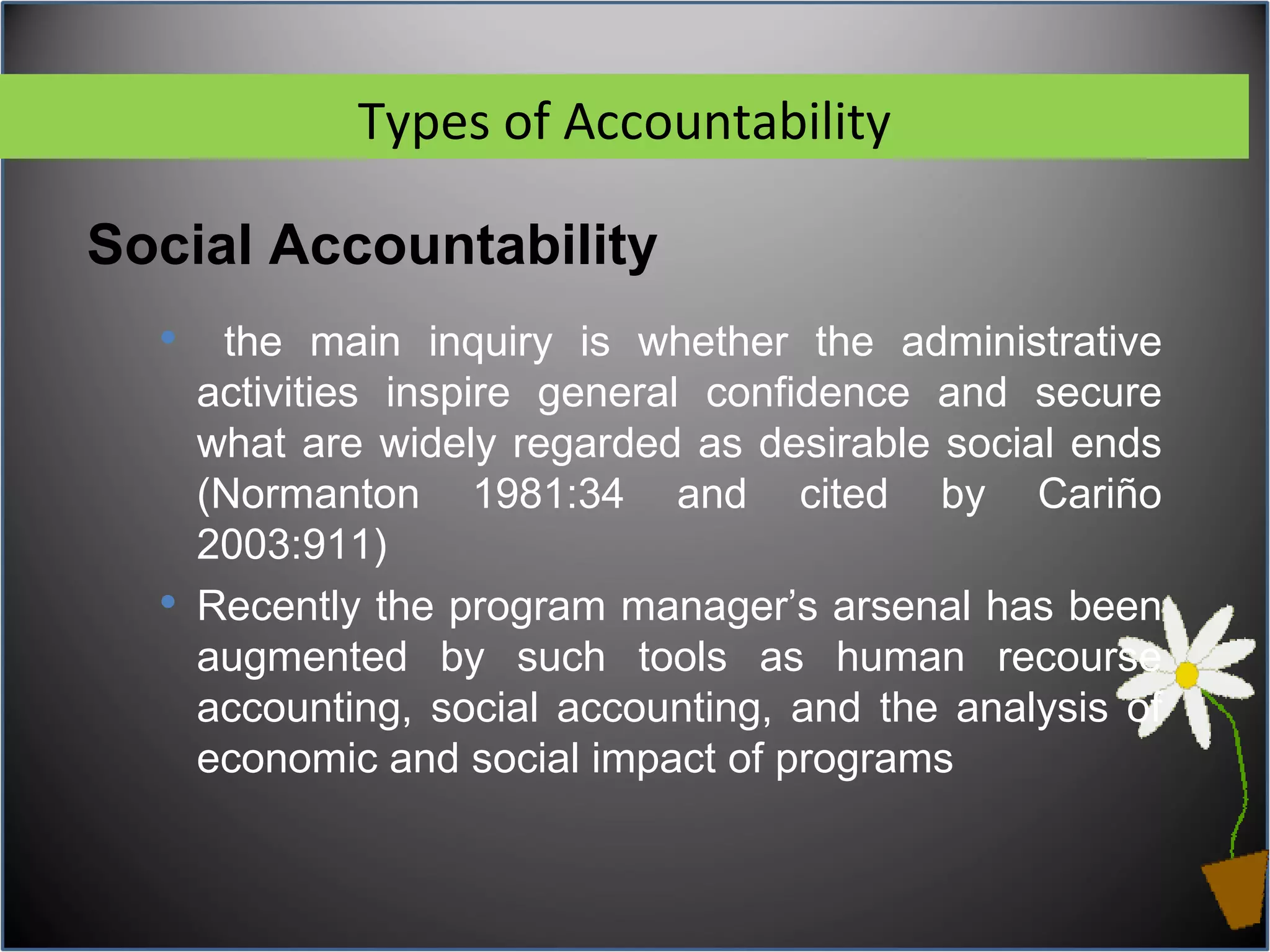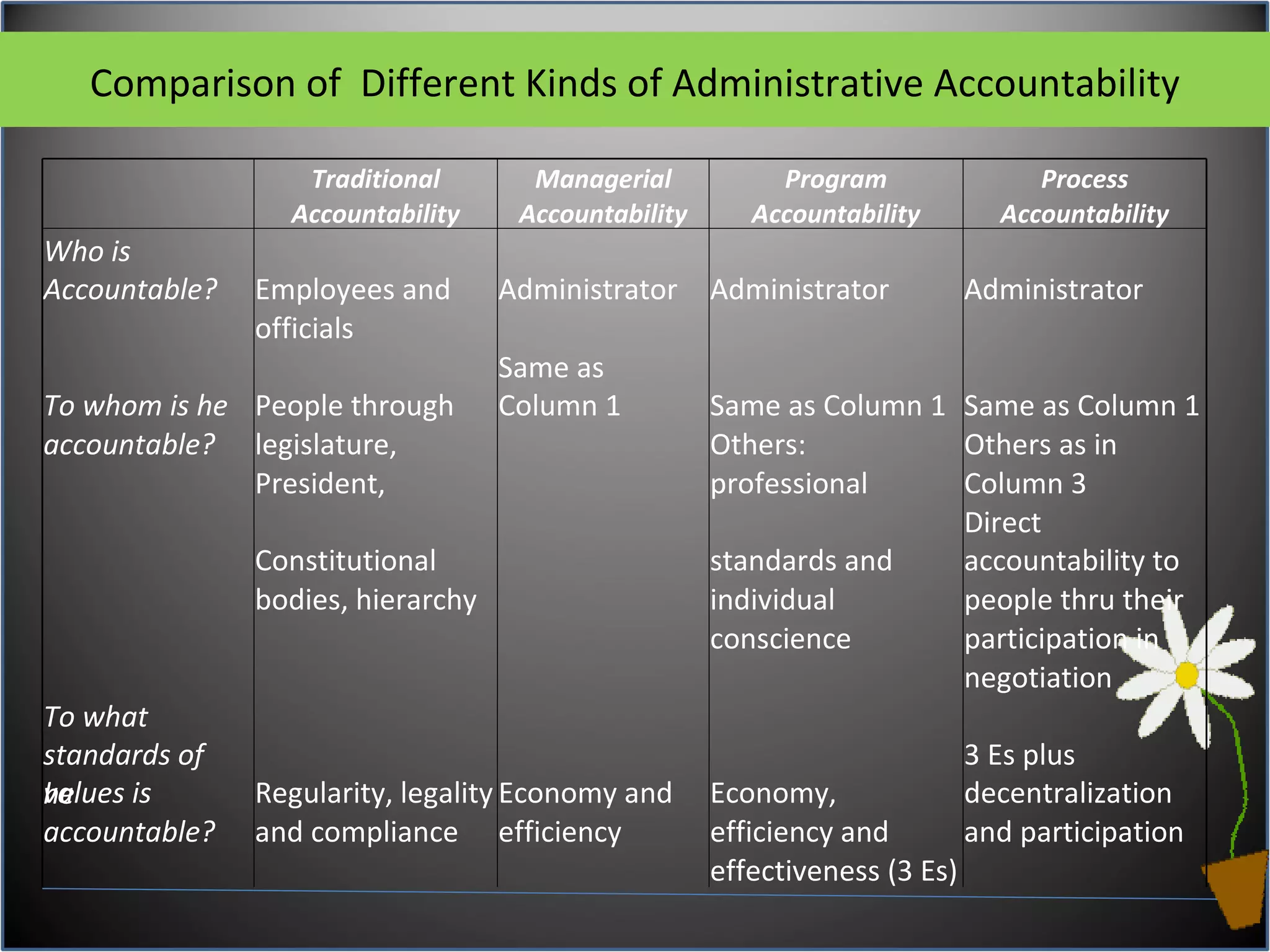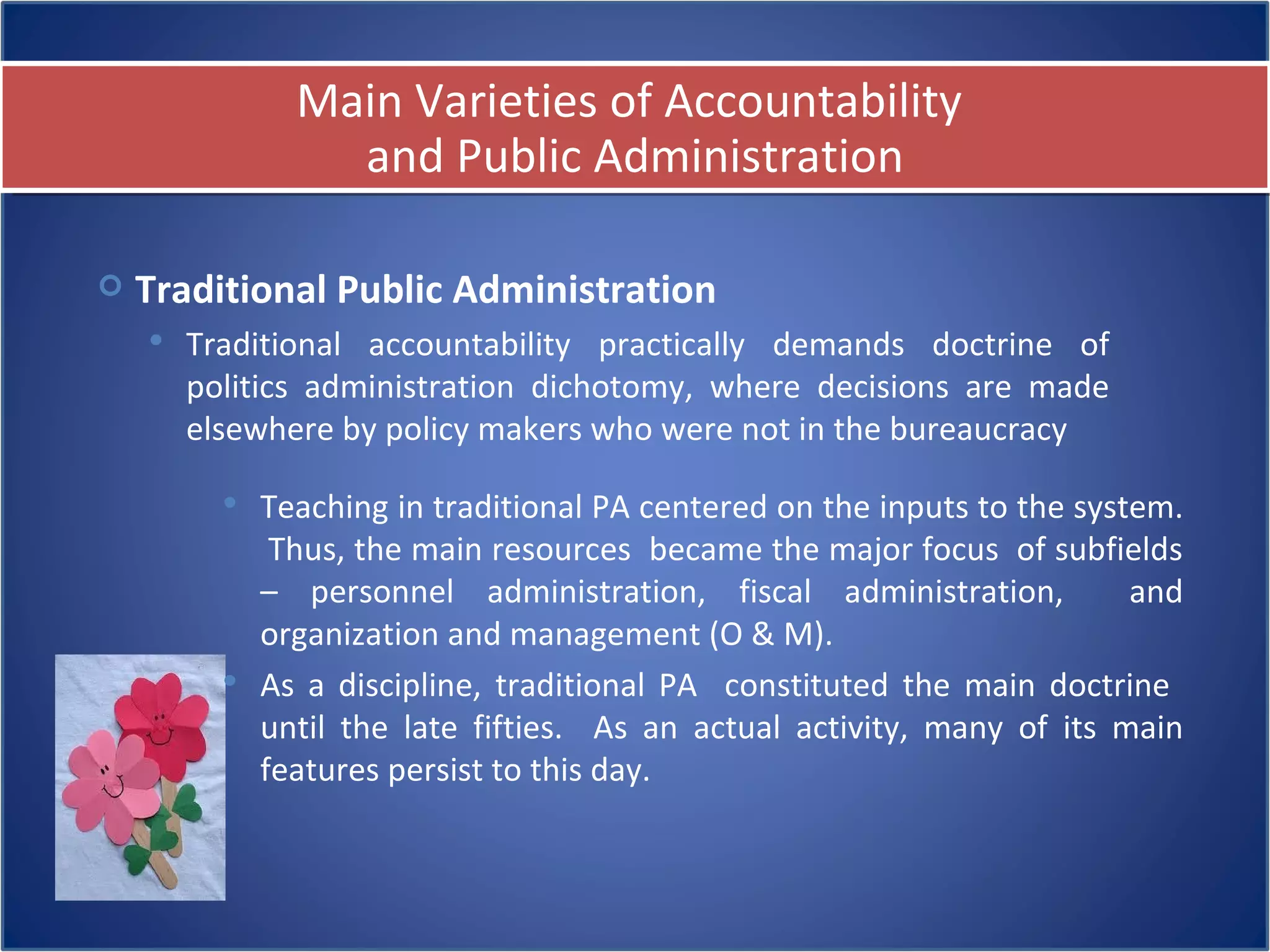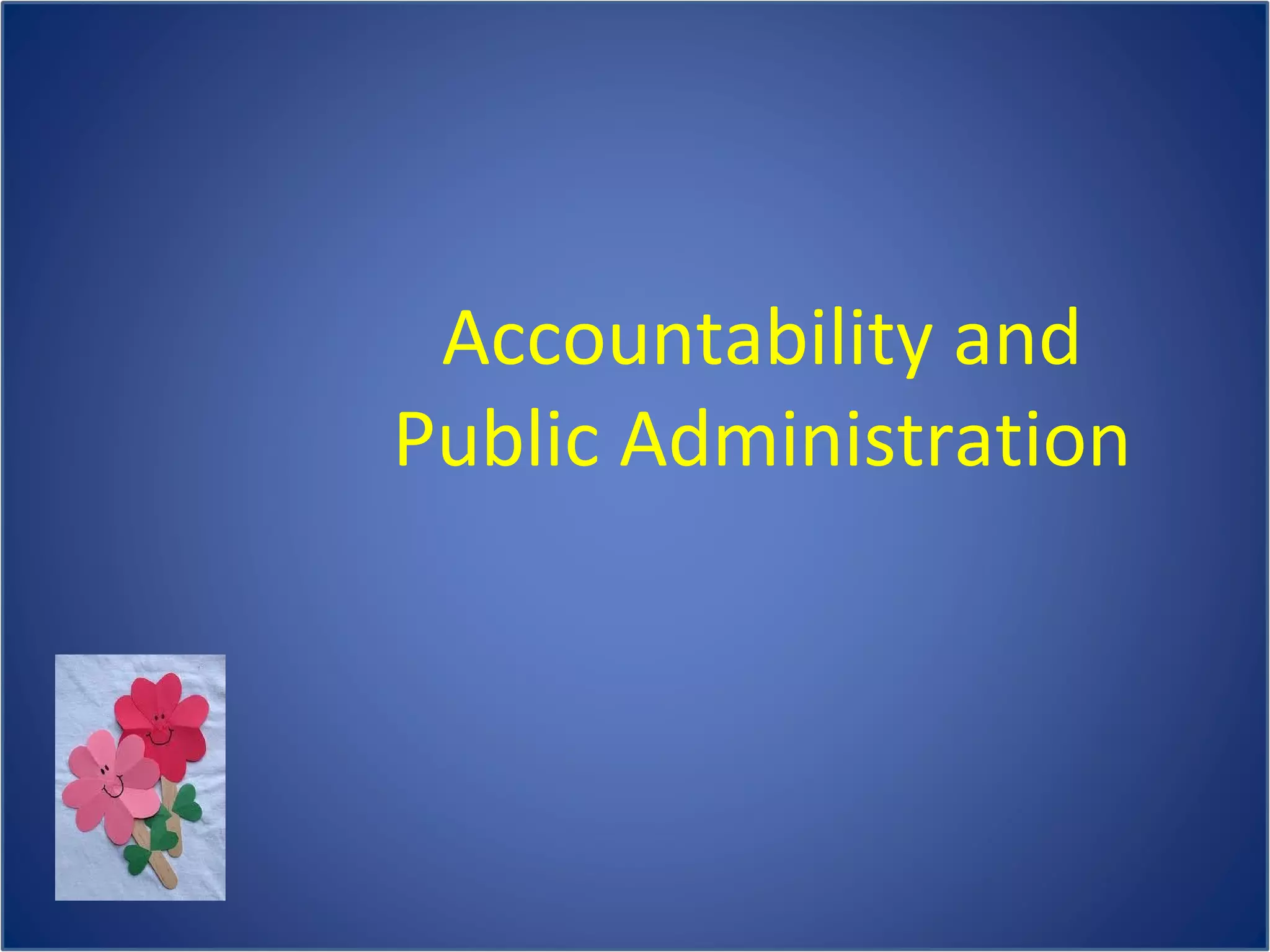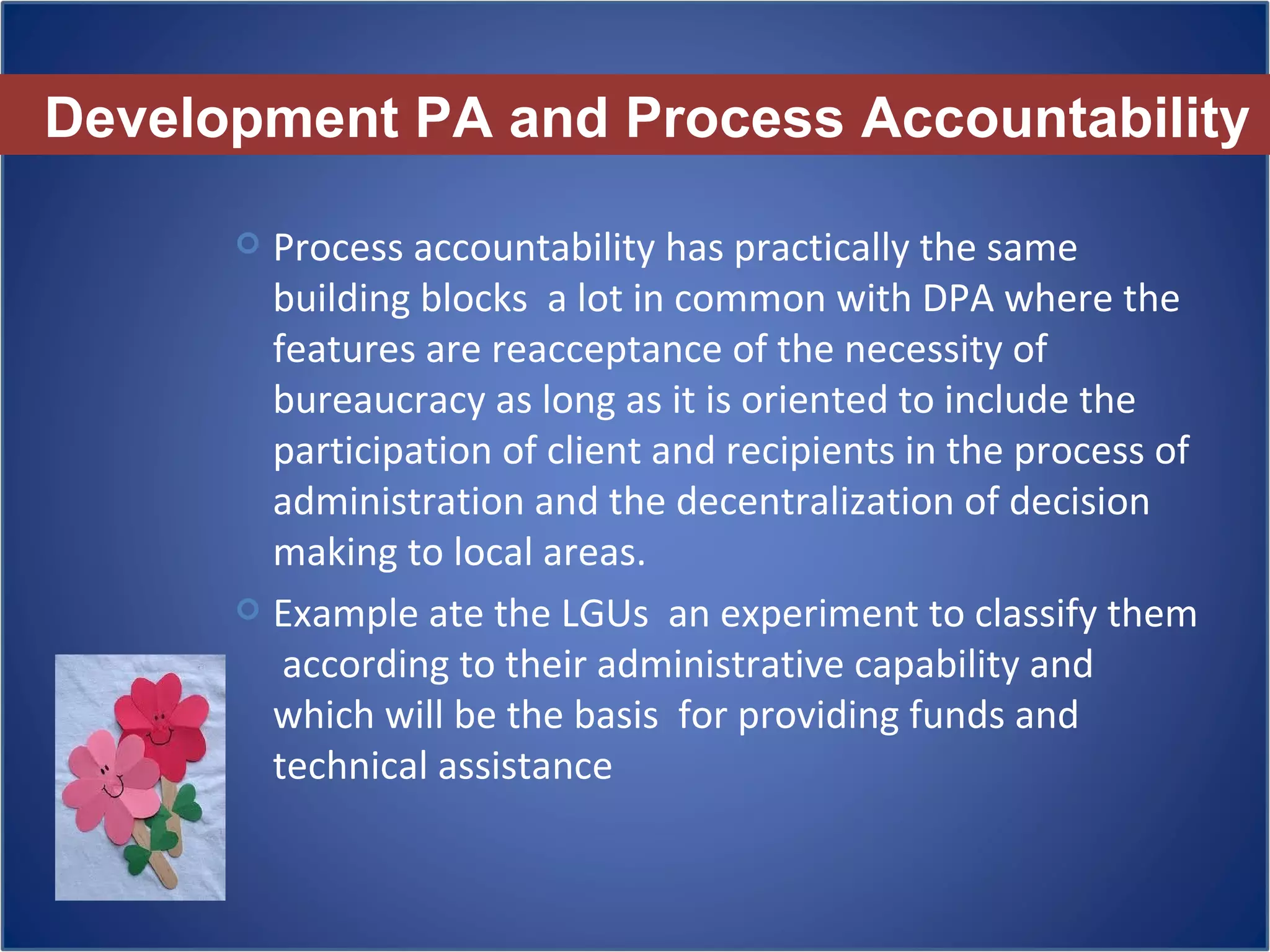This document discusses different types of administrative accountability in public administration:
1. Traditional accountability focuses on compliance with legal and administrative rules, with accountability to superiors and external controllers.
2. Managerial accountability emphasizes efficiency and economy, encouraging cost reduction. It holds administrators accountable for efficient operations.
3. Program accountability assesses whether programs achieve intended objectives effectively and economically. It examines comprehensive performance using standards of effectiveness, efficiency and economy.
4. Process accountability emphasizes agreed upon procedures and methods rather than direct outcomes. It involves providers and recipients agreeing to processes in advance and holding each other accountable to the agreement.
